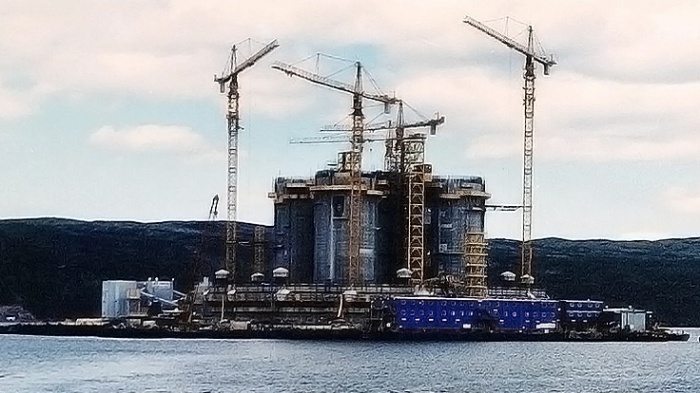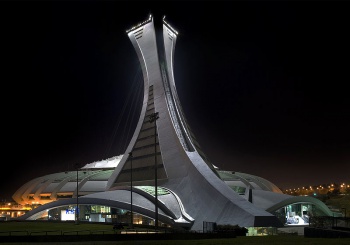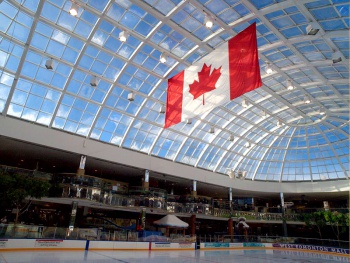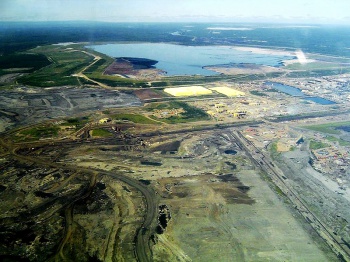 Confederation Bridge by Tuer Geist
Confederation Bridge by Tuer Geist
We live right next to one of the most commercialized nations on the Earth. The result? Everybody knows the story behind the Statue of Liberty, WTC and Capitol Hill, but not many people have even remotely considered the possibility that there might be something grand in Canada - except for its nature, of course. Maybe it’s time to take on a bit of an American attitude and properly promote some of Canada's breathtaking structures. This article will prove that Canadians not only think big, but that they can build epic! The following few paragraphs will walk you through the vastest, longest, tallest, and most expensive structures in the country.
Confederation Bridge (Prince Edward Island – New Brunswick)
The Confederation bridge, formerly known as the “Fixed link”, is the longest bridge in Canada and one of the longest continuous multi-span marine bridges in the world. It links Prince Edward Island with mainland New Brunswick, Canada.
The completion of the 12.9 kilometre (8 mile), 11 metre wide, and 40 metre high bridge spanning the Abegweit passage of the Northumberland Strait took four years to construct (1993-1997) and cost 1.3 billion Canadian dollars. The Confederation Bridge is a two-lane highway toll bridge that carries the Trans-Canada Highway between Borden-Carleton, Prince Edward Island (at Route 1) and Cape Jourimain, New Brunswick (at Route 16). The bridge rests on 62 piers, with the main piers at 250 metres (820 feet). The speed limit on the bridge is 80 kilometres per hour (50 miles per hour). It takes about 10 minutes to cross the entire length of the bridge, making it one of the longest above-water rides in the world.
Controversy Behind the Bridge
Toll revenues are currently at their lowest since the bridge opened. The tolls charged by Strait Crossing Bridge Limited (SCBL), a subsidiary of the Strait Crossing Development Inc. consortium which, built the structure for between C$25 to C$30 million a year. Since the original tendered price of C$1 billion was reached by C$330 million, the consortium’s expenses have increased considerably, since it’s their responsibility to cover it. Going over budget, along with the enormous operating costs for the bridge, makes it one of the most demanding structures ever built in Canada!
Hibernia Oil Rig (Jeanne d’Arc Basin, Newfoundland and Labrador)
 Hibernia GBS by Wikimedia Commons
Hibernia GBS by Wikimedia Commons
Hibernia is the largest Canadian offshore drilling project. Hibernia is located in the Jeanne d’Arc Basin, 315 kilometres east of St John’s, Newfoundland and Labrador, at a water depth of 80 metres. The Hibernia oil field consists primarily of two reservoirs named Hibernia and Avalon. These are located at average depths of 3,700 and 2,400 metres, respectively.
The sheer vastness of the field reflects its potential. The field allocates approximately three billion barrels of oil. In-place and recoverable reserves are estimated to climb up to 1,200 million barrels. In 2009, the total crude oil production hit 126,000 barrels per day. Hibernia production reached 667 million barrels of crude oil by the end of 2009.
Construction
The Hibernia field developed a-one-of-a-kind gravity base structure strong enough to withstand a collision with a one-million-ton iceberg (expected to occur once every 500 years) and a direct hit from a six-million-ton iceberg (expected once every 10,000 years). Hibernia’s enormous 450,000-ton gravity base structure consists of a 105.5-metre concrete caisson made of high-strength concrete reinforced with steel rods and pre-stressed tendons. The caisson is surrounded by an icewall that consists of 16 concrete teeth.
Inside this immense gravity structure are storage tanks for 1.3 million barrels of crude oil. The two drill shafts, each housing 32 drill slots to accommodate the wells, are both over 111 metres high. Drills will reach depths of more than 3,700 metres below sea level, the depth necessary for the oil extraction.
The topsides have a design capacity of 23,900 cubic metres per day , based on the 98 million cubic metre (615 million barrel) production estimate. The topside facilities consist of five super modules (processing, wellhead, mud, utilities, and accommodation for 185 people) as well as seven topside mounted structures (helideck, flareboom, piperack, main and auxiliary lifeboat stations, and two drilling modules).
Olympic Stadium and The Tower of Montreal (Montreal, Quebec)

Olympic Stadium and The Tower
of Montreal by Alain Carpentier
The stadium was originally built for the 1976 Summer Olympics. The stadium is the largest in Canada when it comes to the seating capacity and is used by baseball, soccer, and football teams for their major matches even now. The stadium can accommodate over 78,322 visitors at its fullest capacity. The Olympic Stadium is commonly referred to as the “The Big O,” a reference to both its name and to the doughnut-shape of the permanent component of the stadium’s roof. “The Big Owe” has been used to reference the astronomical cost of the stadium. The Tower of Montreal is an integral part of the stadium. At 175 metres, it is the tallest inclined tower in the world.
“The Big Owe”
1970 initial projections were C$134 million. In 2006, the year that stadium's cost were paid in full, the total was C$1.61 billion! How did the Olympic Stadium go from an expensive but worthwhile investment to an astronomically overpriced project that ranks second in the list of the world's most expensive stadiums ever built, list right after Wembley Stadium in London? The question brought political death to many of those behind the construction of the “Big O.”
In May 1976, the Quebec government even had to introduce a special tax to raise the money that would cover the vast expenses and help recoup the investment. The 1976 special tobacco tax act stipulated that once the stadium was paid off, ownership of the facility would be returned to the City of Montreal. This is, however, heavily questioned, given that the stadium will need reconstructions sooner or later and the annual profit of $20 million in revenue might not cover for the expenses, pushing Montreal into the debt trap once again.
West Edmonton Mall (Edmonton, Alberta)

West Edmonton Mall
by Šarunas Sarunas Burdulis
The West Edmonton Mall is the largest shopping mall in North America and the fifth largest in the world. It was the world’s largest mall until 2004!
The West Edmonton Mall covers an unbelievably vast area of about 570,000 metres squared (over 6 million square feet). The mall features attractions like Ed’s Recreation Centre, the Ice Palace Sea Lions, Rock World Waterpark, Galaxyland, and many more. West Edmonton Mall accommodates over 800 stores and services and over 20,000 parking spaces.
The mall is one of the largest employers in the region, currently employing well over 23,000 people. The mall attracts 60,000 to 150,000 shoppers daily, making its annual spin approximately 28.2 million visitors. In January 2007, the mall was valued at C$926 million.
The expansion of the mall will continue, as 30,000 square metres (320,000 square feet) of new shops, sport facilities, a 12-storey office building, and a 600-unit apartment building are to be built within the next few years.
Syncrude Tailings Dam (Fort McMurray, Alberta )

Syncrude Tailings Dam
by Wikimedia Commons
The name Syncrude Tailings Dam traditionally refers to the Mildred Lake Settling Basin, an embankment dam that is, by volume of construction material, the largest dam in the world. It lies 40 kilometres (25 miles) north of Fort McMurray at the northern end of the Mildred Lake lease. The dam is owned by Syncrude Canada Ltd. and serves as a barrage used to store tailings (leftover slimes and residues) that appear as by-products of the oil extraction operation.
The Mildred Lake Settling Basin is filled with water for the long term rather than being quickly filled by solids as in many other tailings dams. The embankment has a circumference of 18.2 kilometres and it is 40 metres high on average, with its highest point at approximately 88 metres. It is over 540 million cubic metres in volume.
Toxic Danger
It might seem like the dam itself doesn’t pose any threat to the surrounding cities and wildlife. However, many non-governmental organizations argue that not only oil sands, but also the dam itself have a huge negative impact on the local environment. Only three years ago, Alberta experienced its first campaign defending hundreds of migratory ducks trapped on toxic oil sands pond. The discussion of whether the hype in the town of Fort McMurray connected to the dam development was adequate is also beginning to attract the attention. Someone has to pay the price of success. The disadvantages of oil sands and dams like Syncrude Tailings are slowly beginning to upset local authorities and citizens. The question is, will we be able to stop the negative effects or is it too late?





[…] hat mein Confed Bridge Bild in seinem Artikel zu den größten kanadischen Bauwerken übernommen… Jay Banks hat mein Confed Bridge Bild in seinem Artikel zu den größten kanadischen Bauwerken […]